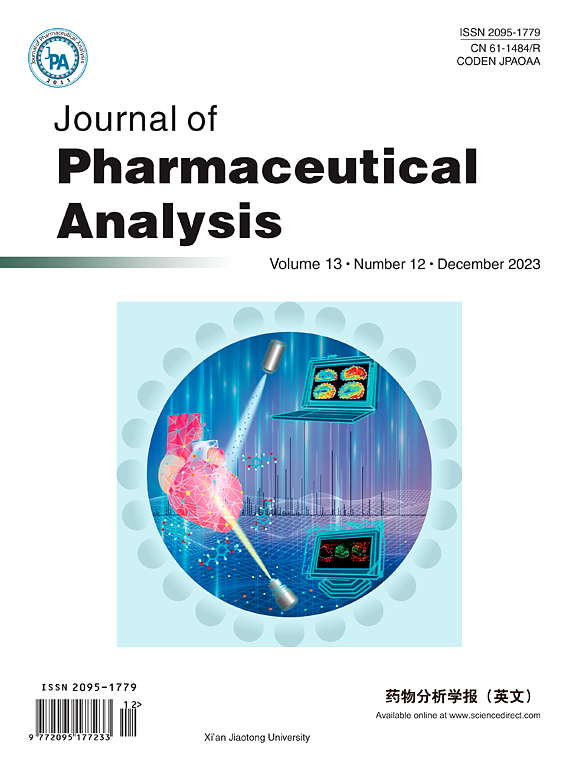LC-ESI-MS 定量分析中药物与代谢物之间的信号干扰及其评估策略
IF 8.9
1区 医学
Q1 PHARMACOLOGY & PHARMACY
引用次数: 0
摘要
液相色谱-电喷雾离子化串联质谱(LC-ESI-MS)是一种广泛应用于体内药物分析的技术。药物和代谢物之间在电喷雾离子源内发生的电离干扰会导致信号变化,从而可能影响定量的准确性。目前,方法验证通常会忽略这类信号干扰,在没有基质匹配校准的情况下,可能会导致定量结果出现系统误差。在本研究中,我们使用三种 LC-ESI-MS 系统对十组不同的药物及其相应的代谢物进行了调查,以评估信号干扰的普遍程度。这些干扰可能会导致或增强药物和代谢物定标曲线的非线性,从而改变分析物响应与定量浓度之间的关系。最后,我们通过逐步稀释测定建立了一套评估方案,并采用了三种解析方法:色谱分离、稀释和稳定标记同位素内标校正。将上述策略纳入方法建立过程,以提高定量准确性。本文章由计算机程序翻译,如有差异,请以英文原文为准。
Signal interference between drugs and metabolites in LC-ESI-MS quantitative analysis and its evaluation strategy
Liquid chromatography-electrospray ionization tandem mass spectrometry (LC-ESI-MS) is a widely utilized technique for in vivo pharmaceutical analysis. Ionization interference within electrospray ion source, occurring between drugs and metabolites, can lead to signal variations, potentially compromising quantitative accuracy. Currently, method validation often overlooks this type of signal interference, which may result in systematic errors in quantitative results without matrix-matched calibration. In this study, we conducted an investigation using ten different groups of drugs and their corresponding metabolites across three LC-ESI-MS systems to assess the prevalence of signal interference. Such interferences can potentially cause or enhance nonlinearity in the calibration curves of drugs and metabolites, thereby altering the relationship between analyte response and concentration for quantification. Finally, we established an evaluation scheme through a step-by-step dilution assay and employed three resolution methods: chromatographic separation, dilution, and stable labeled isotope internal standards correction. The above strategies were integrated into the method establishment process to improve quantitative accuracy.
求助全文
通过发布文献求助,成功后即可免费获取论文全文。
去求助
来源期刊

Journal of Pharmaceutical Analysis
Chemistry-Electrochemistry
CiteScore
16.20
自引率
2.30%
发文量
674
审稿时长
22 weeks
期刊介绍:
The Journal of Pharmaceutical Analysis (JPA), established in 2011, serves as the official publication of Xi'an Jiaotong University.
JPA is a monthly, peer-reviewed, open-access journal dedicated to disseminating noteworthy original research articles, review papers, short communications, news, research highlights, and editorials in the realm of Pharmacy Analysis. Encompassing a wide spectrum of topics, including Pharmaceutical Analysis, Analytical Techniques and Methods, Pharmacology, Metabolism, Drug Delivery, Cellular Imaging & Analysis, Natural Products, and Biosensing, JPA provides a comprehensive platform for scholarly discourse and innovation in the field.
 求助内容:
求助内容: 应助结果提醒方式:
应助结果提醒方式:


